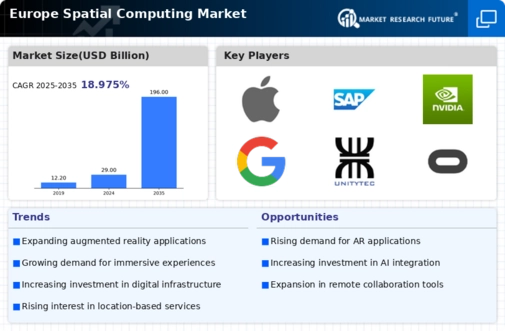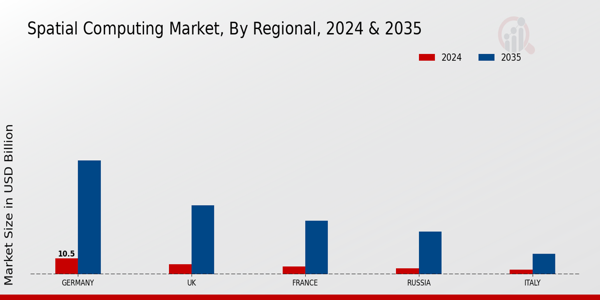The Europe Spatial Computing Market is characterized by its dynamic landscape, where numerous players vie for dominance as technological advancements shape the way spatial computing is integrated into various applications. In this market, companies are consistently leveraging innovative solutions that facilitate augmented reality, virtual reality, and geographic information systems. The competition is driven by a combination of policies, consumer demand for immersive experiences, and the need for effective data visualization tools tailored for various sectors such as architecture, healthcare, and education.
As businesses increasingly recognize the potential of spatial computing, this market is projected to experience significant growth, fostering an environment where competitive strategies are continually evolving.Apple has carved a notable presence in the Europe Spatial Computing Market, leveraging its strong brand equity and extensive ecosystem of devices.
The company is highly regarded for its innovative approach to integrating spatial computing functionalities into its products, notably through devices like the iPhone and iPad that support augmented reality applications. Apple's strengths lie in its robust user base and the seamless integration of hardware and software, which enhances user experience and engagement.
The company’s continued investment in research and development underscores its commitment to maintaining a leadership position in spatial computing, as it consistently introduces new features that capitalize on the evolving interests of consumers in Europe, emphasizing immersive and interactive experiences.SAP is well-established in the Europe Spatial Computing Market, recognized for its enterprise-level solutions that harness spatial computing capabilities. The company focuses on integrating spatial data analytics within its software offerings, enabling businesses to make more informed decisions based on location-based insights.
With its comprehensive suite of products and services, such as SAP Business Technology Platform and SAP HANA, SAP delivers powerful tools that enhance organizational efficiency. The company's strengths include a solid reputation for reliability, a vast partner ecosystem, and a commitment to innovation, which is evident in its recent mergers and acquisitions aimed at enhancing its technological capabilities in spatial computing. With a strong foothold in Europe, SAP continually strives to meet the needs of various industries, allowing them to leverage spatial data for strategic growth and operational excellence.
















